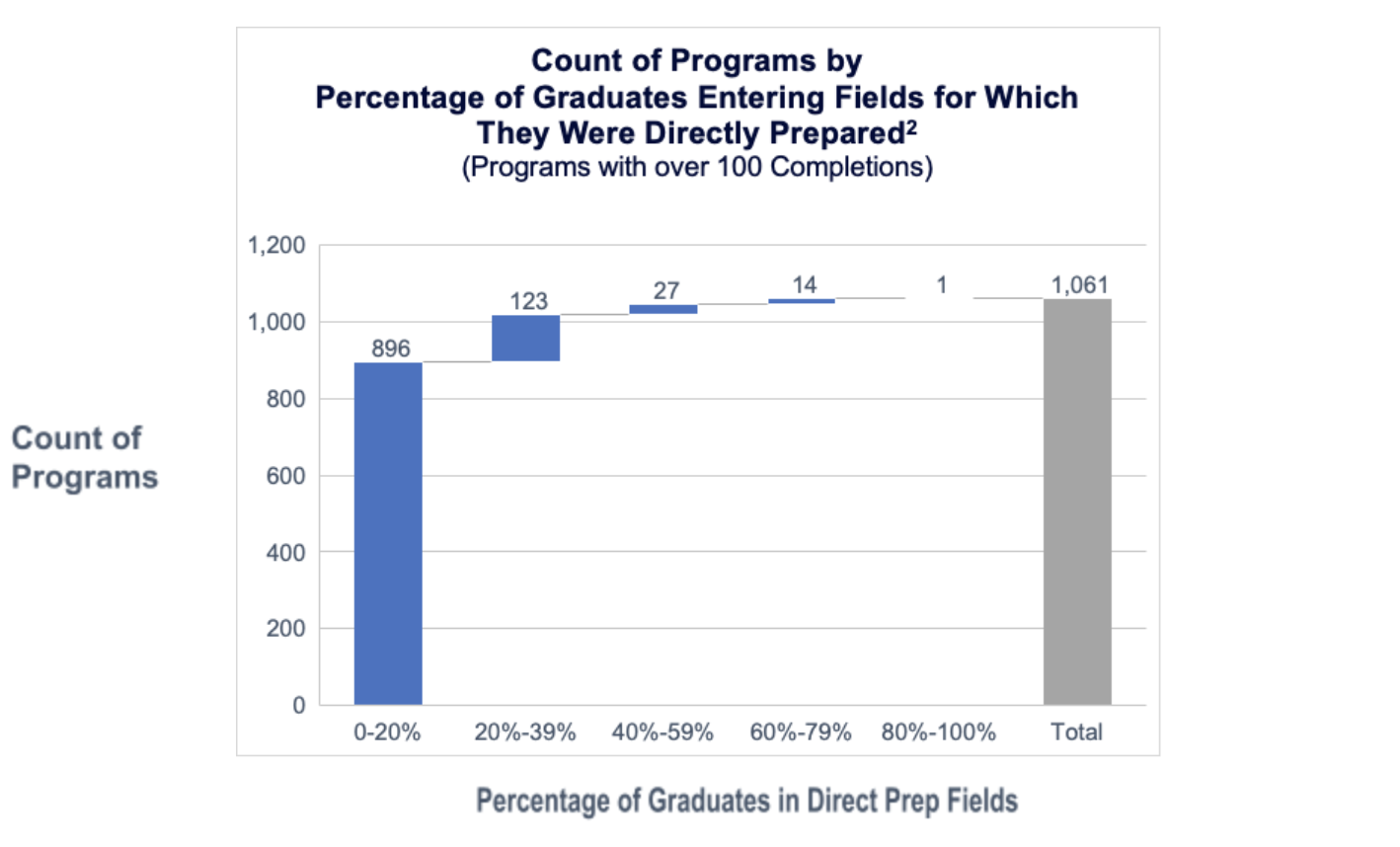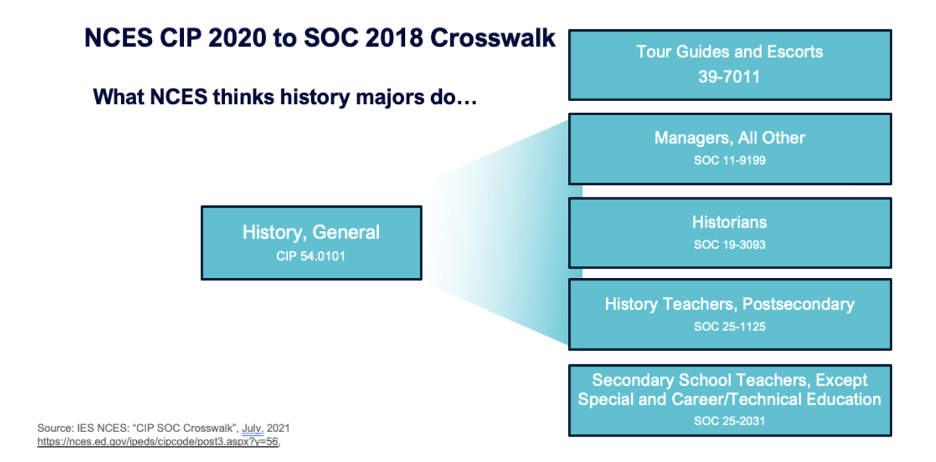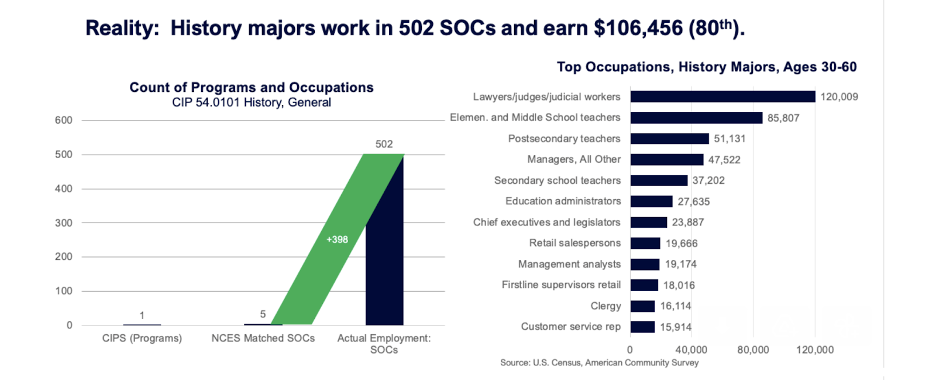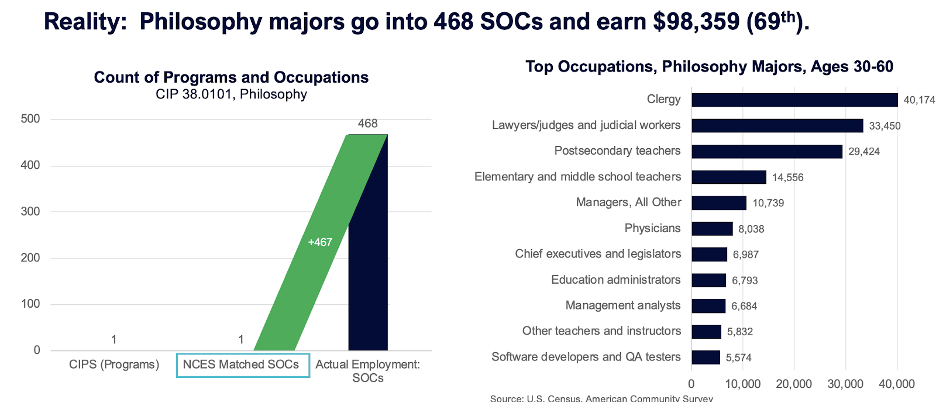Recently, there has been a great deal of pressure on colleges and universities to create and invest in programs that prepare graduates for jobs and cut programs that don’t. The advocates believe we need more welding, engineering, and nursing programs and fewer philosophy, English, history, and other liberal arts programs. They assume clear links between academic programs and occupations for graduates, which are neatly embodied in the NCES crosswalk between programs and occupations. As one firm says:
Anticipating how academic programs connect to the world of work is fundamental for effective program research. By default, reports…model this connection with a program-to-occupation mapping that’s based on the CIP-SOC crosswalk developed by the NCES and the BLS.
In theory, they are right. In practice, it is bunk for graduates with a bachelor’s degree.
Let’s start with the theory. For each program, labor market economists only count jobs for which graduates are directly prepared. Nursing graduates are directly prepared to become nurses. History majors are directly prepared to become history teachers and historians. Many analysts apply this concept when they count the number of jobs available for graduates. Typically they will use the NCES crosswalk to map programs to jobs. Here is what NCES has to say about its crosswalk.
The matches are based on the content of the CIP Code and SOC Code descriptions combined with expertise from statisticians at both federal agencies. The CIP SOC Crosswalk is not based on actual empirical data.*
In practice, most bachelor’s programs do not lead to employment in fields for which students are directly prepared. We analyzed all IPEDS programs with over 100 completions in 2020 (1,061 programs). For each program, we analyzed the occupations of graduates using data from the American Community Survey (part of the US Census), which tracks respondents’ current occupations, incomes, and undergraduate majors. In this sample, 896 programs had fewer than 20% of graduates going into direct prep fields. 84% of the graduates in these programs do something else.

Only 42 programs had more than 40% of graduates employed in direct prep fields. Overall, 18% of bachelor’s degree holders go into fields for which they are directly prepared.
The direct prep fallacy is particularly acute in the liberal arts. I was a history major, so I often use it as an example. As shown below, NCES asserts that history directly prepares people for just five occupations: tour guides, historians, postsecondary history teachers, secondary school teachers, and my favorite, managers “all other”.

Fortunately for me and thousands of other history majors, this direct prep crosswalk is disconnected from reality. We end up in hundreds of occupations, and yes, some of us become baristas. On the other hand, we often go to graduate school. Furthermore, we do pretty well: between the ages of 30 and 60, our mean wage is $106,456 per year, which ranks at the 86th percentile for individual income in the U.S.
Other much-maligned fields also do pretty well. For example, philosophy majors find work in over 400 fields, not just the one included in the NCES crosswalk. On average, they earn almost $100,000 a year, which puts them at the 84th percentile for individual earnings in the U.S.

It is also worth noting that the occupation Chief Executives and Legislators makes the top ten for both programs. Not bad for a major with no job prospects.
Liberal arts majors are not directly prepared for work in many occupations. However, in a world where the future of work is challenging to predict, I suspect they will continue to adapt and thrive. Many folks who prepared for a specific line of work may watch it disappear. Will they be able to adapt?




